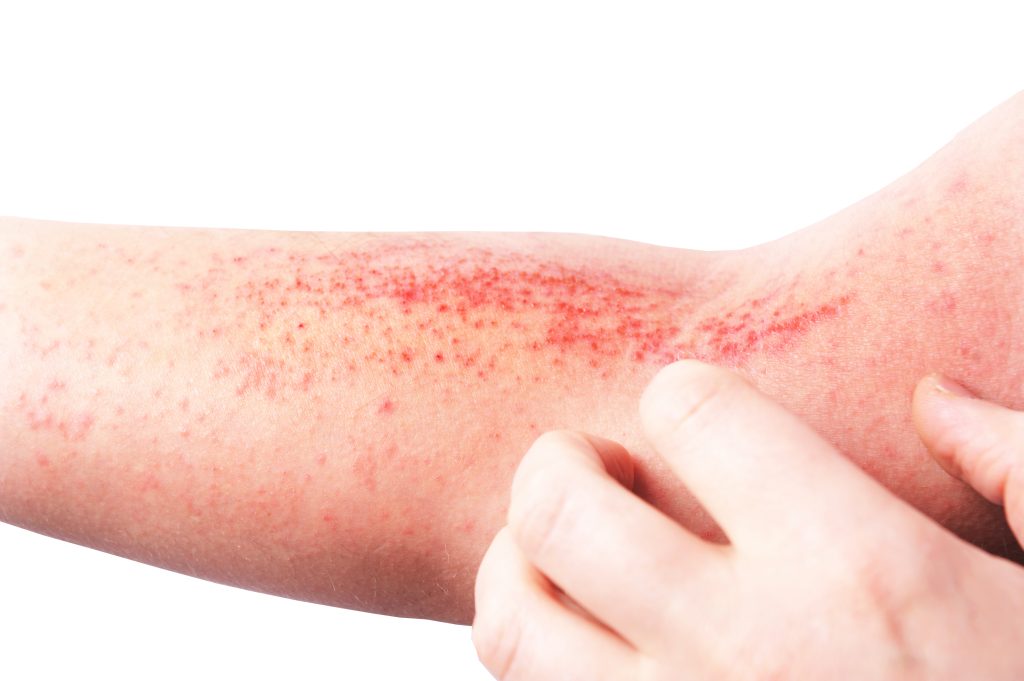More than 80% of adults and adolescents with moderate-to-severe atopic dermatitis (AD) who responded to lebrikizumab treatment at Week 16 in the ADvocate 1 and 2 monotherapy trials and continued treatment for up to three years experienced sustained skin clearance with monthly maintenance dosing, according to long-term results from the ADjoin long-term extension study.
The results were presented as a late breaker at the European Academy of Dermatology and Venereology (EADV) Congress in Amsterdam.
Lebrikizumab is an interleukin-13 (IL-13) inhibitor that selectively blocks IL-13 signaling with high binding affinity. Almirall S.A. has licensed the rights to develop and commercialize Ebglyss for the treatment of dermatology indications, including eczema, in Europe. Lilly has exclusive rights for development and commercialization of Ebglyss in the U.S. and the rest of the world outside Europe. The U.S. Food and Drug Administration (FDA) has approved lebrikizumab-lbkz (Ebglyss, Lilly) for the treatment of adults and children 12 years of age and older who weigh at least 88 pounds (40kg) with moderate-to-severe AD that is not well controlled despite treatment with topical prescription therapies in September 2024.
“These new three-year clinical data demonstrate the potential this biologic treatment has to provide sustained relief from this disease, offering long-term benefits to people living with this chronic and relapsing condition,” says Prof. Dr. med. Diamant Thaçi, Director at the Institute and Comprehensive Centre for Inflammation Medicine, in Lübeck, Germany, in a news release.
Patients taking lebrikizumab who completed 52 weeks in ADvocate 1 or 2 could enroll in ADjoin for an additional 100 weeks of continued treatment (up to 152 weeks of continuous treatment). Patients in this analysis of the long-term extension trial received treatment either 250 mg every two weeks (Q2W) or once monthly (Q4W). The approved maintenance dose of lebrikizumab is 250 mg Q4W. These data presented are part of ADjoin, the long-term extension study of the lebrikizumab trials, and include participants who responded to lebrikizumab treatment at Week 16 from ADvocate 1 and ADvocate 2.
Key findings
- 84% of these patients taking lebrikizumab once monthly and 83% taking lebrikizumab every two weeks maintained clear or almost-clear skin (Investigator Global Assessment or IGA 0,1) at three years.
- 87% of these patients taking lebrikizumab once monthly and 79% taking lebrikizumab every two weeks achieved or maintained at least 90% improvement in disease extent and severity (EczemaArea and Severity Index (EASI)-90) at three years.
- 83% of these patients taking lebrikizumab once monthly and 91% taking lebrikizumab every two weeks did not require either high-potency topical corticosteroids or systemic treatments.
The safety profile of these patients taking lebrikizumab in ADjoin was consistent with previous lebrikizumab studies, and no new safety signals were observed up to three years of treatment. The majority of adverse events were mild or moderate. Less than three percent of patients experienced adverse events leading to treatment discontinuation. The most common side effects of lebrikizumab were conjunctivitis, injection site reactions and shingles (herpes zoster).
Additional data from this clinical study is underway and results to be presented at future congresses, Almirall reports.


